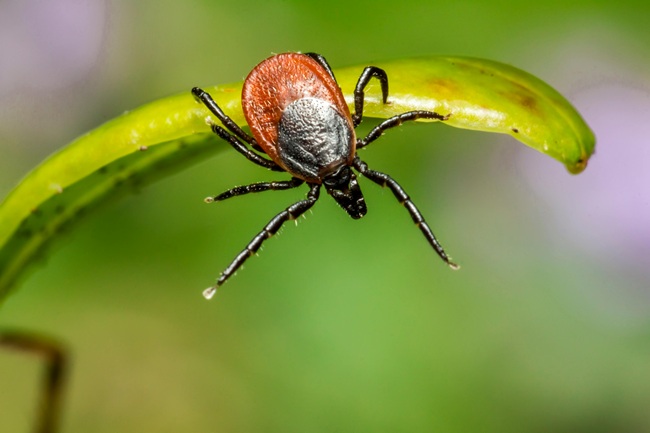
Ticks are right up there with mosquitos when it comes to insect annoyances. If you have a dog or an outdoor cat, you’ve likely dealt with ticks at some point. Even if you don’t own a dog, ticks are still more than happy to jump on you if you spend any extended time in a grassy or wooded area. They can even be found in your backyard. If bitten by a tick, humans can experience everything from minor swelling and itchiness to the transmission of disease to the development of new food allergies. Yes, even food allergies. The lone star tick can cause certain humans to be allergic to red meat if it bites them. So how do you control tick populations and make sure that they are nowhere near you, your family, and your pets?
Ticks are more than happy to bite humans, but they are far more of a nuisance to pets. Dogs are (obviously) covered in fur, which means that ticks have plenty of places to hide. Dogs also struggle to remove ticks. While humans can pluck ticks off their skin thanks to our opposable thumbs, dogs are incapable of removing ticks and require human assistance. Additionally, if a dog brings ticks inside the home, those ticks are now free to target the dog’s human owners at their leisure. After spending extended amounts of time outdoors, especially if you’re in a wooded area, check your dog for ticks and fleas. The best areas to spot check are:
- In and around the ears
- Under a collar
- Under the front legs
- Between the back legs
- Around the tail
- Between toes
If any ticks are located, use a flea comb or your fingers to remove them.
Ticks like to live in areas dense with vegetation and hiding spots. When it comes to the average suburban yard, there are some steps you can take to make your yard inhospitable to ticks. First, make sure that your yard is tidy and free of obvious piles. Leaf litter is an ideal habitat for ticks, so be cognizant of that in the fall. Keeping your lawn maintained and the grass mowed can drastically reduce the chance of ticks invading your property.
Another way to prevent tick populations from establishing a habitat on your property is to introduce beneficial nematodes to your yard. Nematodes provide a variety of benefits to gardens and lawns including pest management. While nematodes eat a wide variety of pests such as grubs, termites, and root weevils, they also eat ticks. Specifically, nematodes target engorged female ticks, killing them before they can lay eggs and drastically increase the number of ticks on your property. Once introduced to your yard, nematodes are fairly self-sufficient. You can learn more and purchase beneficial nematodes at ARBICO Organics.
At the beginning of this article, we mentioned that the bite of the lone star tick can cause a red meat allergy. While most non-vegetarians would be pretty distraught over being robbed of the ability to enjoy a nice hamburger or a wonderfully prepared steak, ticks are capable of carrying far more deadly diseases. The most prominent of these diseases are Lyme disease and rocky mountain spotted fever, though there are many additional tick-borne diseases.
Lyme disease is a bacterial infection that can affect multiple body systems if not treated early. Commonly characterized by an expanding red rash in the shape of a bull’s-eye, this rash can be accompanied by flu-like symptoms like fever, chills, and muscle aches. If left untreated, the infection can spread, leading to severe joint pain (especially in the knees), neurological problems like facial paralysis, and even heart issues. Early treatment with antibiotics is highly effective. It is spread by deer ticks, also known as blacklegged ticks. This tick is found everywhere across the eastern United States.
Rocky Mountain spotted fever is a disease that can easily become fatal if not properly and immediately treated. Symptoms often begin 2-14 days after a tick bite and include fevers, headaches, and various rashes. These rashes typically appear 2-5 days after the fever starts and can look like red splotches or pinpoint dots. The rashes commonly begin on the wrists and ankles before spreading to the rest of the body. Because the rash can be subtle or absent in some cases, diagnosis can be difficult.
Ticks are nothing to mess around with, but you can do a lot to minimize the chance of ticks establishing a colony on your property by following the advice in this article. If you’re looking for more information about the pest control aspect of tick management, including more information on beneficial nematodes, visit ARBICO Organics. Founded in 1979 in Arizona, ARBICO Organics continues to produce innovative means of natural biological pest control and fertilizers for the hobbyist and professional grower alike.


Comment here